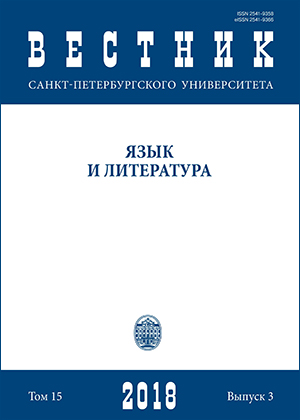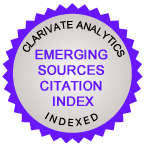Types of coherence in media discourse
DOI:
https://doi.org/10.21638/spbu09.2018.312Abstract
The article touches upon the types of coherence in media discourse that mean how modern media texts are connected with each other. The main attention is paid to the correlation between coherence, hypertextuality and multimodality. The examples are taken from 100 articles of English and German online issues, “The New York Times” and “Frankfurter Allgemeine Zeitung”, as they are among the most reputable and popular mass media around the world. Moreover, regarding the elections in the USA in 2016 it becomes of interest to follow how this remarkable event found its reflection in American texts, on the one hand, and in the European non-English ones, on the other. The coherence between the media texts is provided mainly by four types of coherence, such as local, global, hypertextual and multimodal coherence. Local coherence is based on the consistency of subject and naming units, in this case the naming units of the most important event become the base of the text and create the correlation between media texts of different subjects and different issues, turning the local coherence into the global one. Furthermore, the media texts are connected by extralinguistic means, the hyperlinks and multimodal elements in particular. The hyperlinks and the multimodal structure in a modern media text form the coherence of media with other network resources. These can be relevant links to other news articles or irrelevant ones to adverts or social networks providing greater possibilities to discuss an event within the online space. The new and original approach presented in the article is in the integrated analysis of different types of coherence in mass media on examples taken from two languages. Regarding this we deal with media discourse as a widespread, multistructural and infinite phenomenon establishing solid global coherence between all spheres of people’s life.
Keywords:
media discourse, coherence, hypertextuality, multimodal text, English, German
Downloads
References
References
Downloads
Published
How to Cite
Issue
Section
License
Articles of "Vestnik of Saint Petersburg University. Language and Literature" are open access distributed under the terms of the License Agreement with Saint Petersburg State University, which permits to the authors unrestricted distribution and self-archiving free of charge.






